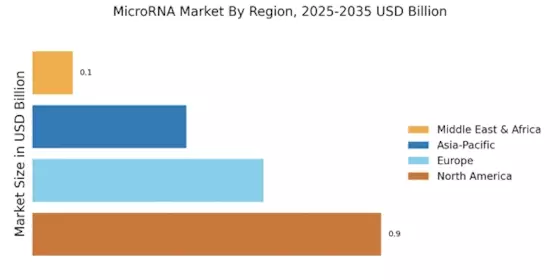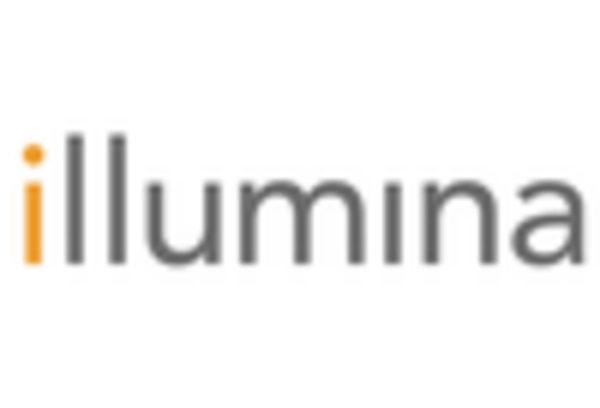Rising Prevalence of Chronic Diseases
The MicroRNA Market is significantly influenced by the rising prevalence of chronic diseases, such as cancer, cardiovascular disorders, and diabetes. These conditions have been linked to dysregulation of microRNA expression, which has prompted extensive research into their role as biomarkers and therapeutic targets. According to recent statistics, chronic diseases account for approximately 70% of all deaths worldwide, underscoring the urgent need for effective diagnostic and treatment options. As healthcare providers seek to implement more precise and personalized approaches to disease management, the demand for microRNA-based solutions is expected to grow. This trend not only highlights the potential of microRNAs in clinical applications but also positions the MicroRNA Market for substantial growth in the coming years.
Growing Demand for Personalized Medicine
The MicroRNA Market is increasingly aligned with the growing demand for personalized medicine. As healthcare shifts towards more individualized treatment strategies, microRNAs are emerging as key players in tailoring therapies to specific patient profiles. Their ability to influence drug response and disease progression makes them valuable in the development of personalized treatment plans. Recent studies indicate that microRNA signatures can predict patient responses to various therapies, thereby enhancing treatment efficacy. This trend is expected to propel the MicroRNA Market forward, as pharmaceutical companies and healthcare providers seek to integrate microRNA-based diagnostics into clinical practice, ultimately improving patient outcomes.
Expanding Applications in Drug Development
The MicroRNA Market is witnessing an expansion of applications in drug development, driven by the recognition of microRNAs as potential therapeutic agents. Pharmaceutical companies are increasingly exploring microRNA modulation as a strategy to develop novel drugs for various diseases. Recent reports suggest that the microRNA therapeutics market could reach several hundred million dollars by 2027, reflecting the growing interest in this area. Additionally, microRNAs are being investigated for their roles in drug resistance and efficacy, further underscoring their importance in the drug development pipeline. As more microRNA-based therapies enter clinical trials, the MicroRNA Market is poised for significant growth, with the potential to revolutionize treatment paradigms across multiple therapeutic areas.
Technological Advancements in MicroRNA Analysis
Technological advancements in microRNA analysis are playing a pivotal role in shaping the MicroRNA Market. Innovations in sequencing technologies, such as next-generation sequencing (NGS) and microarray platforms, have enhanced the ability to profile microRNA expression with unprecedented accuracy and efficiency. These advancements have led to a significant increase in the number of microRNA studies published, with thousands of new publications emerging annually. As researchers gain access to more sophisticated tools for microRNA analysis, the potential for discovering novel biomarkers and therapeutic targets expands. This, in turn, is likely to drive the growth of the MicroRNA Market, as more diagnostic and therapeutic products are developed based on these findings.
Increasing Investment in Research and Development
The MicroRNA Market is experiencing a surge in investment directed towards research and development. This trend is primarily driven by the growing recognition of microRNAs as crucial regulators of gene expression and their potential therapeutic applications. In recent years, funding from both public and private sectors has increased significantly, with estimates suggesting that R&D expenditures in this field could reach several billion dollars by 2026. This influx of capital is likely to accelerate the discovery of novel microRNA-based therapies and diagnostics, thereby expanding the market. Furthermore, collaborations between academic institutions and biotechnology firms are becoming more prevalent, fostering innovation and enhancing the overall landscape of the MicroRNA Market.


















Leave a Comment